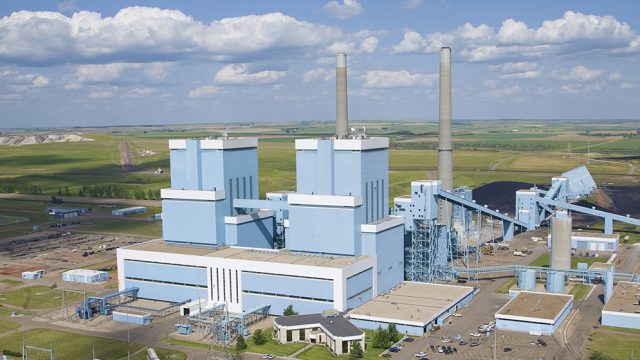North Dakota Coal Production Bucks National Trends, Up 4.3 Percent Since 2012

Things look pretty bleak from coal based on some of the headlines we’ve been seeing recently. Coal production has been declining. The folks at North Dakota’s Lignite Energy Council tell me that in a few weeks the Energy Information Administration (the data arm of the U.S. Department of Energy) is expected to announce that natural gas has overtaken or, at the least, is essentially equal to coal in America’s power mix.
That would be big change. In years past “king coal” has been America’s number one source of power, head and shoulders above all competitors.
Perhaps the most stark news is that Arch Coal, the second largest coal mining company in America, announced bankruptcy earlier this week.
These days North Dakota is most often thought of as an oil state, but coal is an extremely important part of the state’s economy. So how are national trends impacting North Dakota’s coal industry?
 So far there doesn’t seem to be much of an impact at all. Coal production is still strong according to data from the LEC. In 2015 the state produced 28.7 million tons of coal, the same level 2014 and a 4.3 percent increase in production since 2012.
So far there doesn’t seem to be much of an impact at all. Coal production is still strong according to data from the LEC. In 2015 the state produced 28.7 million tons of coal, the same level 2014 and a 4.3 percent increase in production since 2012.
Despite increaes in recent years, North Dakota coal production is down 6.2 percent since 2005, though that compares to a more than 11 percent decline in all types of coal production nationally from 2005 to 2014 (the last year for which data is available) according to the EIA.
While national coal production has declined 1.6 percent since 2012, North Dakota coal production increased more than 4 percent.
This would seem to indicate that there is still a healthy market for North Dakota coal. Long-term production declines have been slight, and have been reversed in recent years even as the nation trends away from coal nationally.
What the North Dakota coal industry really fears, LEC spokesman Steve Van Dyke tells me, isn’t so much competition from natural gas but government regulation.
I told Steve that it seemed from the numbers that North Dakota coal isn’t going anywhere. “For now,” he reminded me, suggesting that federal crackdowns on coal power such as the Clean Power Plan could be devastating. North Dakota, South Dakota, and Montana – despite having some of the cleanest air in the country – must make some of the most drastic changes to emissions policies under the CPP.
Van Dyke said that Americans are enjoying cheap energy right now thanks to healthy competition between coal and natural gas, but that won’t last long if coal power is regulated out of existence. “Enjoy it while it lasts,” he told me.
Public Service Commissioner Randy Christmann has said that the impact of the CPP alone could be as much as $2,400/year in higher consumer prices for a household of four.




